If you have ever carved a pumpkin, you may already know what time has in store for it. Your awesome Jack O’Lantern will soon begin to rot. Have you ever read Pumpkin Jack by Will Hubbell? It’s a sweet story of a boy and his pumpkin and what he discovers about it. Well, this year, we planned to carve our own Pumpkin Jack and look at the decomposing pumpkin process is awesome pumpkin science for kids.
PUMPKIN JACK ACTIVITIES FOR KIDS
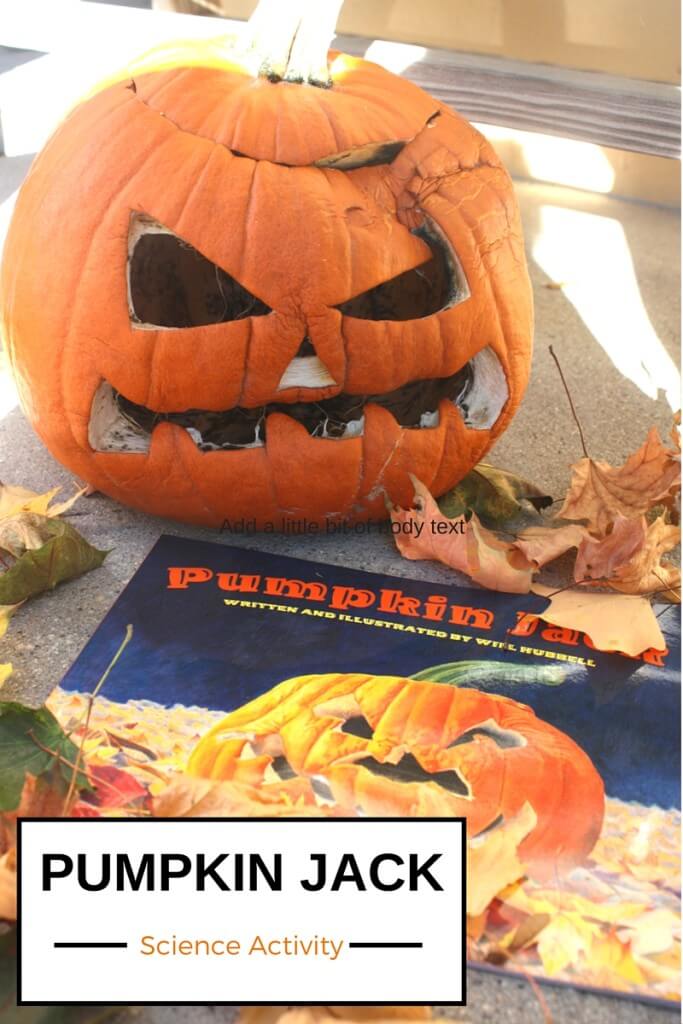
DECAYING PUMPKIN JACK
Rotten science can be fun! We enjoyed combining this awesome pumpkin book with a simple decomposition science activity. We purposefully carved a Jack O’ Lantern early this year. It hasn’t even been a week yet, but our Pumpkin Jack started to grow mold within a couple of days. It is exciting to check the changes every day. Learn more about decomp mold and the stages of decomposition with your rotting pumpkin below.
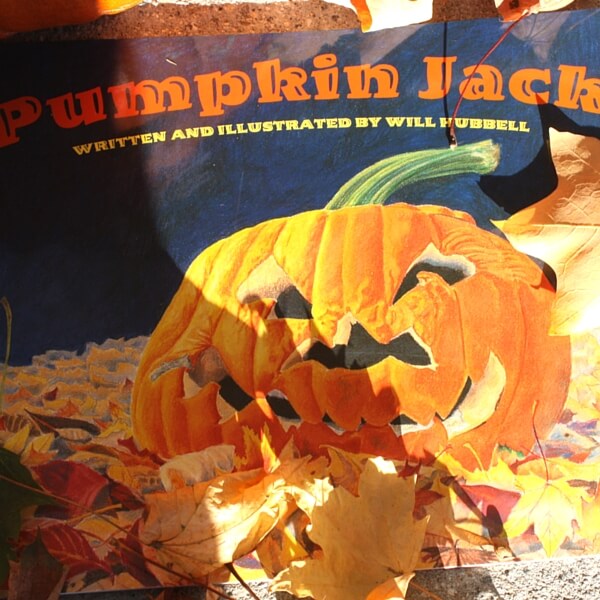
Click here to get your FREE printable Pumpkin Activities.
ROTTING PUMPKIN EXPERIMENT
SUPPLIES:
- The Book: Pumpkin Jack by Will Hubbell
- A carved Jack O’Lantern
- Magnifying Glass,
- Tray
- Disposable Gloves {optional for after he starts to rot}
SET UP:
STEP 1. Carve out your pumpkin.
After you carve your pumpkin, check out these two fun pumpkin activities that use the insides! Set up a pumpkin investigation tray and make a pumpkin sensory bag!
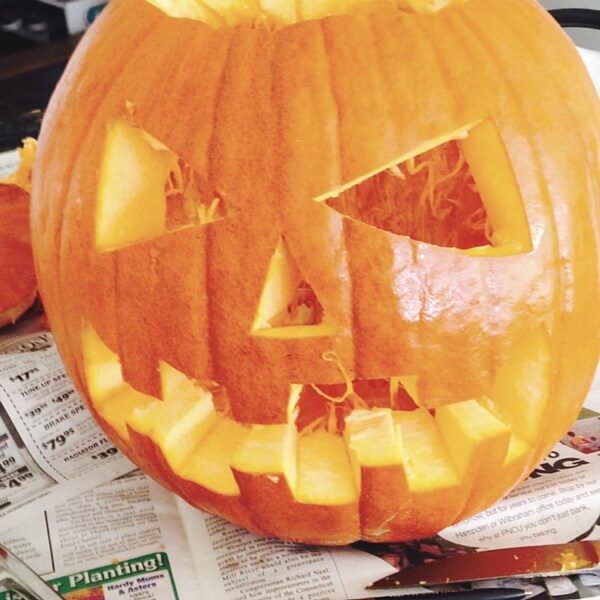
STEP 2. Put your pumpkin on display and observe any changes every day.
We left our carved pumpkin out on the front porch and checked on him every day. Throughout this past week, we have noted the mold growing. He’s growing fur was my son’s reaction. We could also feel him softening. We have observed him flattening out a bit too.
STAGES OF DECOMPOSITION
The decomposition of a pumpkin can be a fascinating and educational process for kids to observe and learn about biology and environmental science. Here’s a simplified explanation of what happens during the decomposition of a pumpkin:
- Initial Stage: When a pumpkin is carved or left out in the open, it begins to decompose. Microorganisms like bacteria and fungi, along with enzymes, break down the pumpkin’s organic matter.
- Softening: The pumpkin’s skin and flesh begin to soften as these microorganisms and enzymes break down the complex carbohydrates and proteins within the pumpkin. This is often the first visible change kids might notice.
- Color Changes: As the pumpkin decomposes, its color may change. It might turn darker or develop mold, which can be different colors like green, white, or black. Kids can observe and document these color changes.
- Odor: One of the most noticeable aspects of decomposition is the odor. Decomposing pumpkins release gases that create a distinctive smell, often described as unpleasant. This can be an interesting aspect for kids to explore, although they might want to do it from a distance!
- Mold Growth: Mold spores in the environment begin to grow on the pumpkin’s surface as it decomposes. Kids can observe the different types of mold that might appear and how they spread across the pumpkin.
- Insects: Insects like flies and ants are attracted to decomposing organic matter. Kids can watch as these insects visit the pumpkin to feed on it and lay eggs. This can provide an opportunity to learn about the role of insects in decomposition.
- Soil Enrichment: The pumpkin breaks down further over time, and its nutrients are returned to the soil. This is an important part of the natural decomposition process, and kids can learn about how decomposition contributes to soil enrichment.
To make this learning experience more engaging for kids, you can set up a “decomposition observation station” where they can regularly check and document the changes in the pumpkin’s appearance, smell, and any visitors (like insects) it attracts.
It’s a hands-on way for kids to learn about the cycle of life and the importance of decomposition in nature. Just remember to handle decomposing pumpkins with care, as they can become messy and attract unwanted pests.
EXTENSION ACTIVITIES
1. EXAMINE THE MOLD!
Pull out disposable gloves, a magnifying glass, and tweezers. Check out the mold.
Why does mold grow? The carved areas of the pumpkin are quickly susceptible to mold due to increased moisture and a good surface! Mold is actually a fungus but not the kind you want to eat!
Mold spores are very {microscopic} tiny, but when enough grow together, the mold can appear to look blue, black, or green. We had a package of mushrooms, so I showed my son an edible fungus!
2. EXPLORE DECOMPOSITION
Kids can also explore the decomposition process or the breaking down of materials (the pumpkin)! Decomposition is all about rotting and decay. The pumpkin’s cells (every living thing is made up of them) will break down over time, especially once you have opened the pumpkin. Mold and bacteria and other organisms like worms go to work on the pumpkin!
If you toss Jack into your compost pile, he will eventually decay and become compost!
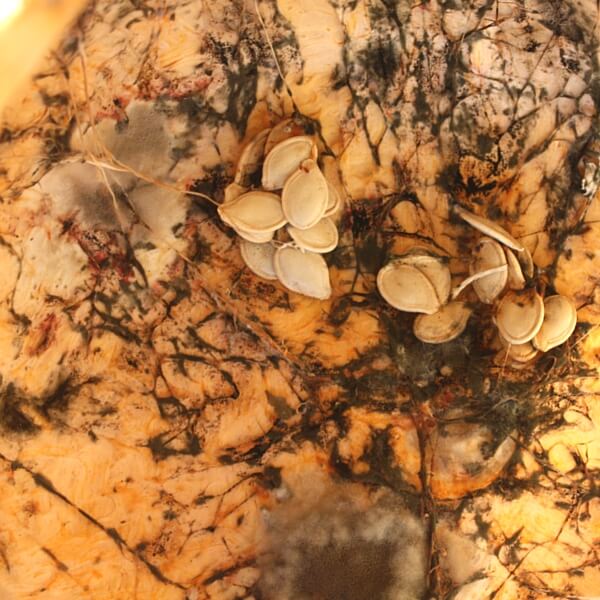
My kiddo is not a fan of mold…
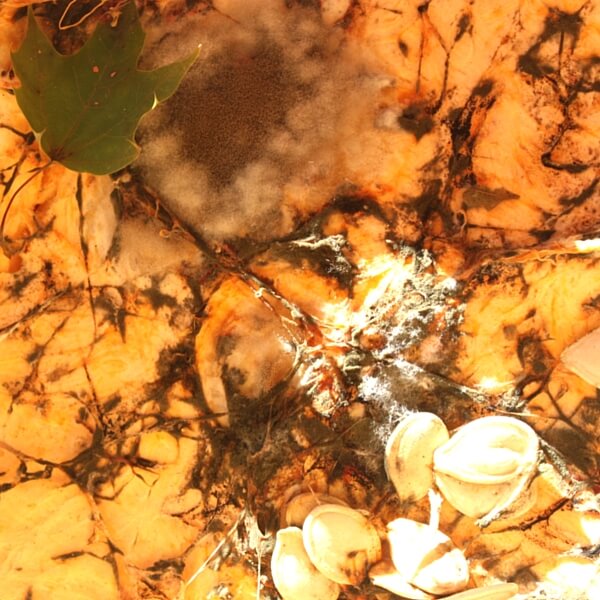
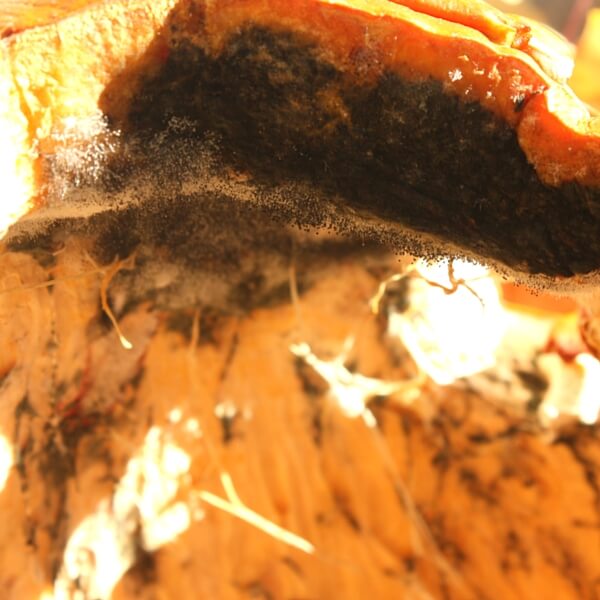
STUDY THE LIFE CYCLE OF A PUMPKIN
From seed to pumpkin and back again. Make sure to investigate the different parts of the pumpkin before you set Pumpkin Jack out to rot. Check out our printable pumpkin life cycle activities.
Bonus: Pumpkin Science
Click on each image below to enjoy pumpkin science projects this season.
- Stir Up Pumpkin Oobleck.
- Create an Erupting Pumpkin-Cano
- Make Slime in a Pumpkin
- Investigate the Pumpkin Life Cycle
Explore More Fall Science
Click on the images below for more Fall theme science activities.
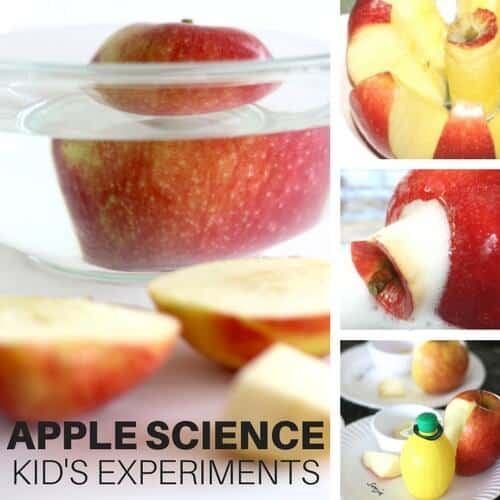
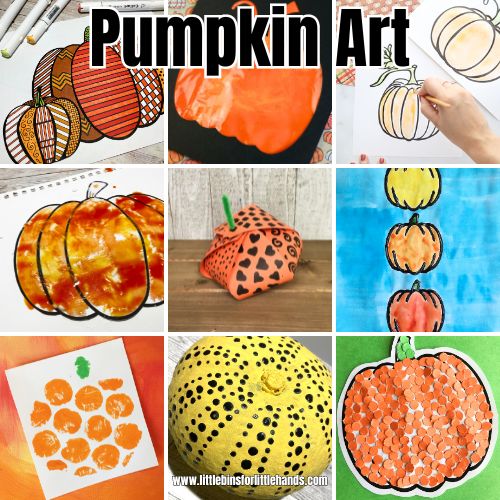
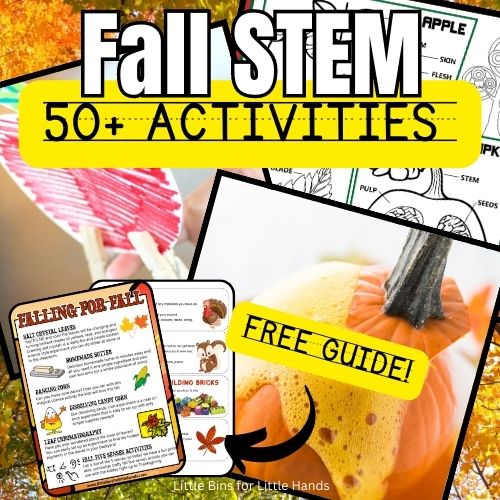
Printable Pumpkin STEM Pack
Perfect for K-2/3rd Grade and homeschool! Many activities can be modified for preschool and older kiddos as well.
Pumpkin is a festive and classic theme for fall and this pack is perfect for exploring pumpkins with a non-Halloween theme! Includes science, STEM, engineering, early math, and art projects.
The kids will have a blast trying 100+ pages of “totally doable” projects! Read more here.
Printable Pumpkin Preschool Pack
Need a younger version of our Pumpkin STEM Project Pack? Perfect for older toddlers and preschoolers to explore pumpkins this fall season. 14+ Pumpkin theme activities include instructions, templates, and a great book list.
Or grab our Growing Preschool Themes Bundle with 6 packs and counting…
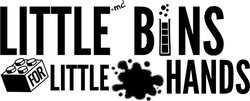

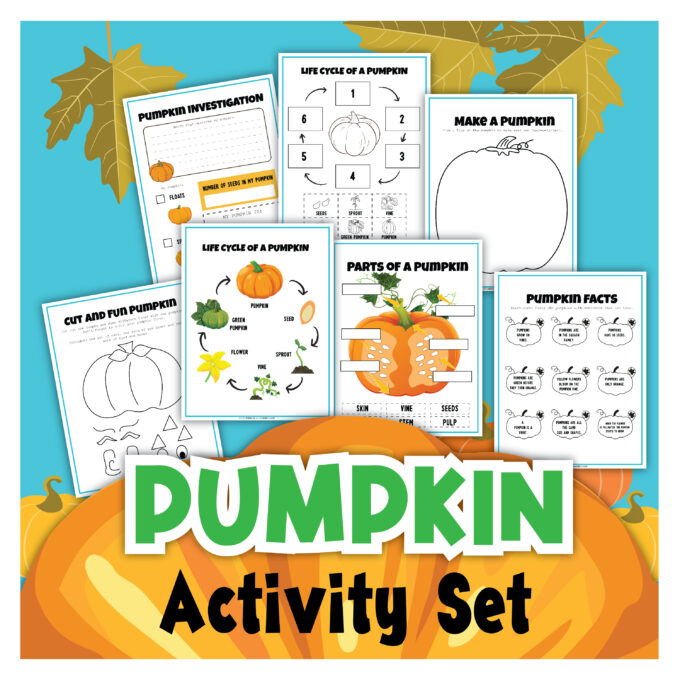
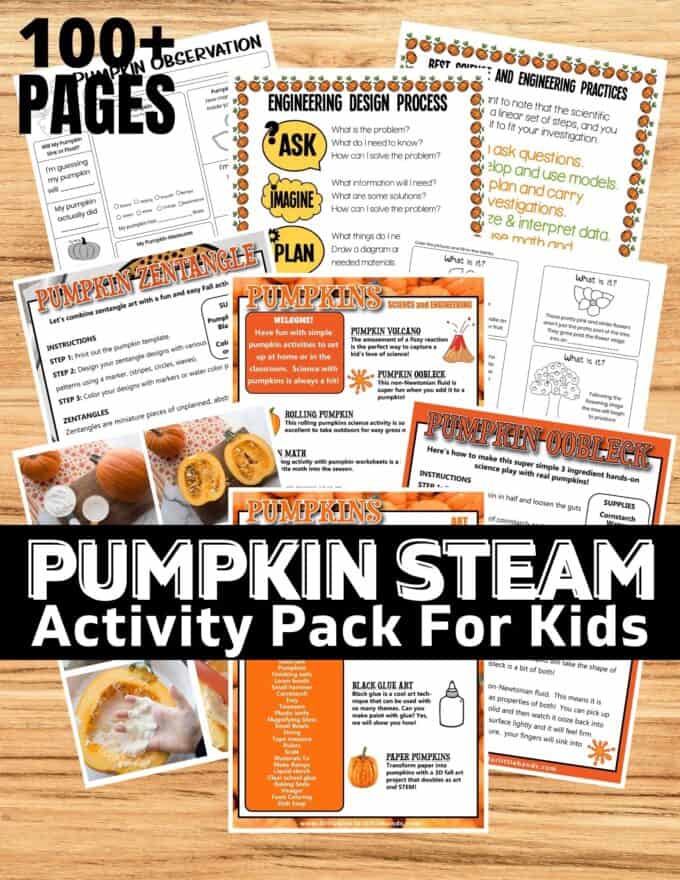
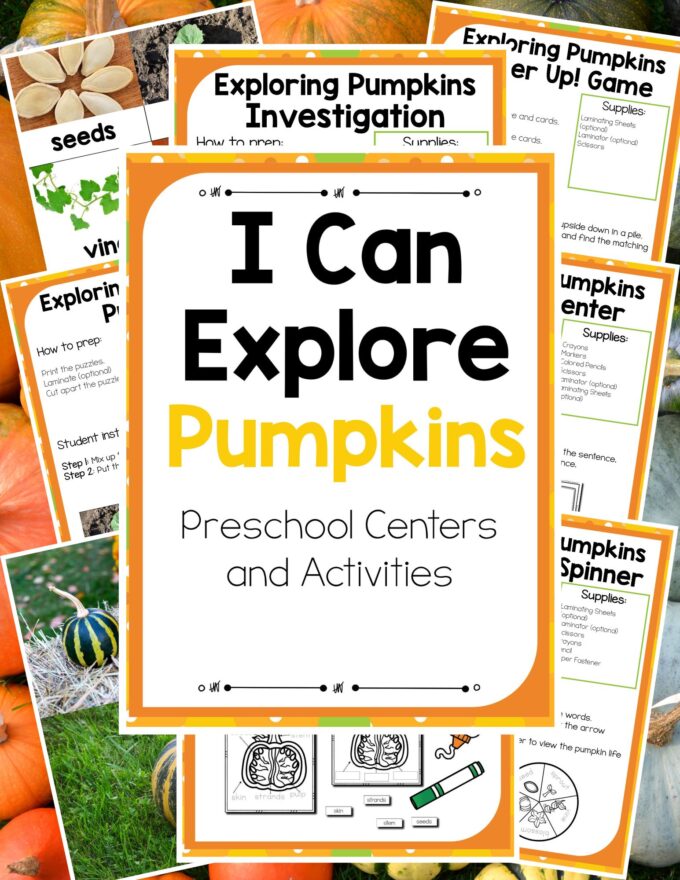
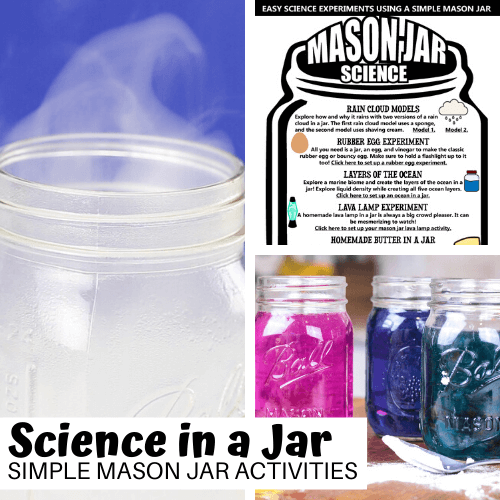
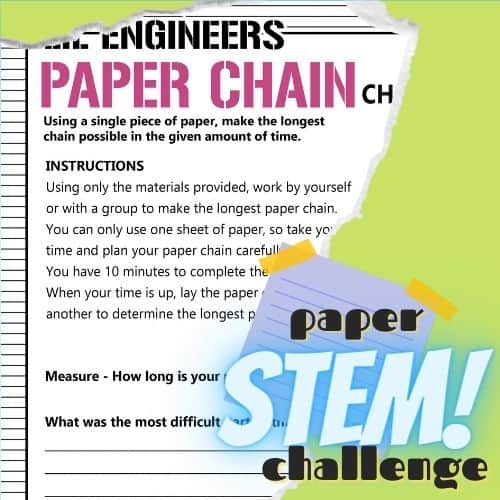
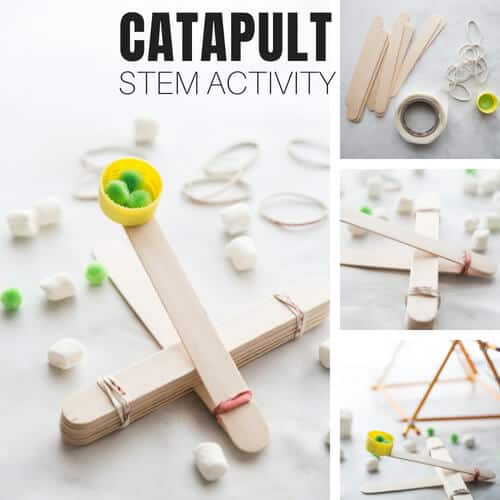
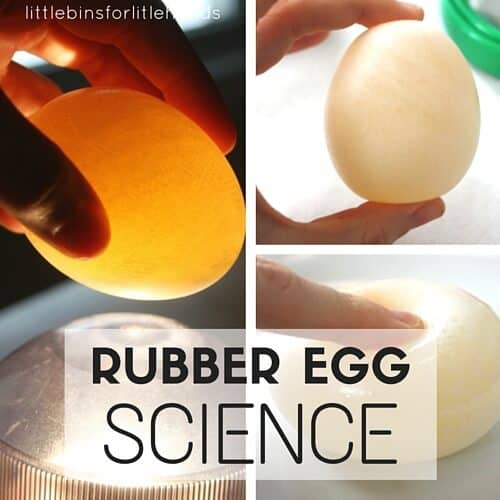
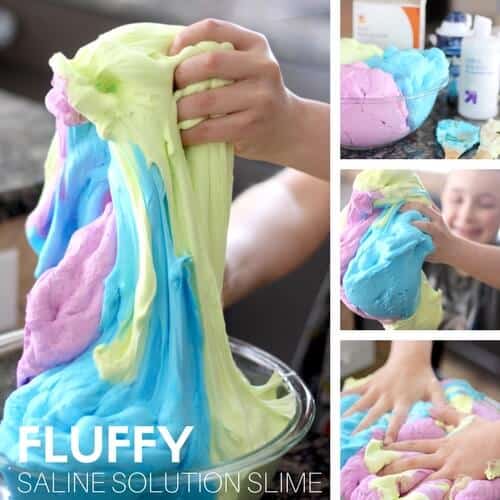
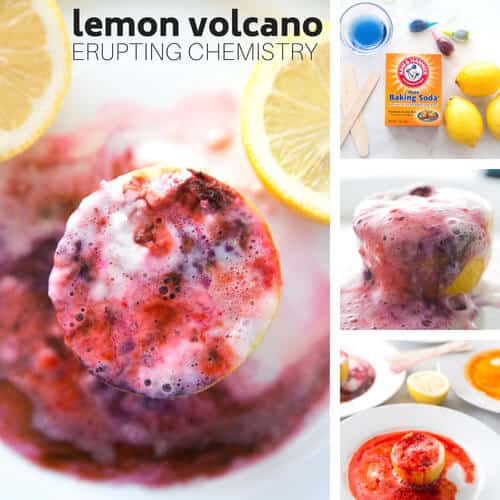
Mold isn’t bacteria. You might want to edit for clarification. Although I’m sure there are plenty of bacteria helping in the decomposition of the pumpkin, mold are fungi.
Thank you for picking that up! I will edit as I did not mean to lump those together!
This is such a cool science activity for after Halloween. Thanks for sharing it.
Did you not clean out the pumpkin? If you have seeds then you left everything inside? I just need to know what you did.
You just make your jack-o-lantern as you would for Halloween and then leave it to rot, so yes you do clean it out.